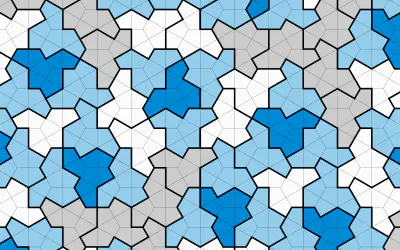Taming Complexity: A Guide to Imperative, Object-Oriented, and Functional Programming

In the realm of software development, complexity is the root cause of majority of problems. Unreliable programs often exhibit intricate structures and are known to be notoriously complex. A complex system is challenging to comprehend and maintain. The harder a system is to understand, the more likely we are to introduce more complexity. As complexity spirals, the likelihood of introducing further complications increases exponentially. A convoluted codebase not only presents testing hurdles but also diminishes the effectiveness of those tests.
Programming Paradigms to the Rescue
Programmers have devised various programming paradigms, each with its unique approach to tackling complexity. These paradigms serve as distinct schools of thought, offering perspectives on how to structure and manage code. Let’s delve into three prevalent paradigms in general-purpose programming:
- The Imperative Paradigm
- The Object-Oriented Paradigm
- The Functional Paradigm
The Imperative Paradigm: A Step-by-Step Approach
In imperative programming, the programs consists of an explicit sequence of instructions/commands that update shared state. Control flow is explicit: commands detail how the computation takes place, step by step. Each step affects the global state of the system.
Since each step can essentially updates the (global, shared) state, any part of the program can update the state. It is up to the programmer to keep track of how and where the state is being updated and tailor the control flow such that the only desired updates happen and in a particular order. As the number possible program state increases so does the number of places the state is updated. It becomes harder to keep the program in consistent state. It will soon become a complex cogwheel system with too many moving parts.
1result = []
2i = 0
3start:
4 numEmployees = length(employees)
5 if i >= numEmployees goto finished
6 e = employees[i]
7 rating = e.rating
8 if rating <= 7 goto nextOne
9 upperCaseName = toUpper(e.name)
10 addToList(result, upperCaseName)
11nextOne:
12 i = i + 1
13 goto start
14finished:
15 return sort(result)
Structured programming , a concept sometimes considered a separate paradigm, offers a way to manage complexity within the imperative paradigm by employing procedures and control flow constructs.
1result = [];
2for (i = 0; i < length(employees); i++) {
3 e = employees[i];
4 if(e.rating > 7) {
5 addToList(result,toUpper(e.name));
6 }
7}
8return sort(result);
The Object-Oriented Paradigm: Encapsulate to Organise
Object Oriented Programming is based on passing messages between objects. Objects respond to messages by performing appropriate operations. These operations are generally called methods.
By encapsulating data and the operations that can manipulate that data within a single entity (the object), we effectively compartmentalise the system’s moving parts into smaller, more manageable groups. There are still moving parts, a lot of them, but they are grouped in a way which allows programmer to handle each group (class of objects) in isolation.
In pure OO style, the control structures like the conditionals and loops become messages themselves.
1result := List new.
2employees each: [:e |
3 e rating greaterThan: 7 ifTrue: [result add (e name upper)]]
4result sort.
5^result
Notice that, even though we can now deal with state updates in isolation, objects need to collaborate among themselves to be useful. That happens by the way of message passing. As the number of objects (classes of objects) increases the communication between them also increases and needs to be dealt with carefully.
The Functional Paradigm: A World Without Side Effects
Functional Programming is based on the mathematical concept of a function. In mathematics there is no notion of updating a variable or state. Functional programming, thus, removes the whole ‘update the shared state’ business. Functions are the building blocks in FP. Functions take arguments and compute a result based on the inputs provided. Control flow is achieved by combining functions through a technique known as function composition.
1sort (map (toUpperCase . name) (filter (\e -> rating e > 7) employees))
This code snippet demonstrates how functional programming paradigms can achieve the same outcome as the previous examples, but in a more declarative way.
Paradigm Shift
Key Takeaways:
In essence, programming paradigms stem from diverse philosophies concerning how the world operates. They represent distinct perspectives on how to effectively model the real world while constructing programs.
The imperative models are based on how computers works. We think in terms of variables that hold values and procedures that manipulate the values referred to by those variable.
The object-oriented paradigm models everything as an object. These objects can then interact with each other and thereby update their internal state when something in the system changes. This corresponds to how we often perceive the world.
Thefunctional paradigms take a different approach, modelling system behaviour using pure functions entirely. This aligns with the mathematical concept that values are immutable, and all system changes are essentially the application of functions.



